Your cart is empty now.
"It Has Been Beautiful Produced....... The Book Presents Interesting Readings as It Includes all the Information Given By The Previous Scholars And Other Texts Regarding the Use And Interpretation Of Technical Terms, Techniques Of Painting, And Classification. The Author Has Been Successful In The Task She Sets Before Herself To Present A Thoughtful Interpretation Of A Text And The Underlying Aesthetic Theory Of Indian Art And Its Relevance Today.
About the Author
Parul Dave Mukherjee teaches at the Department of Art History and Aesthetics, University of Baroda. She has done her doctoral dissertation at the Faculty of Oriental Studies, University of Oxford.
The Citrasutra of the Visnudharmottara-purána, Khanda III Chapters 35-43 is the thirty-second volume in the Kalãmulasastra Series of the Kalãkoâa Division in the Indira Gandhi National Centre For the Arts (IGNCA). The earlier volumes have included the seminal texts, relevant to the Indian arts: Matralaksanam, volume 1; Kanvasatapathabrahmana volumes 12 and 22; Latyayana-srauta-sutra, volumes 27, 28, and 29. These lay the foundations for an incipient theoretical framework before an articulated theory of art emerges. Also, these texts provide the basic structure and building blocks for the evolution of a language of ‘form’. The Karmakanda (popularly called ritual practices) and its systems of a multilayered spatial and temporal design employ a multi-media vocabulary of sound, music, word, movement, and gesture. This design style permeates into the fabric of the specific arts. The texts on music Dattilam volume 2, Brhaddesi, volumes 8 and 10, and Sangitopanisatasroddhara, volume 23, move concurrently on the three planes of concept, form, and technique. So also the texts of architecture (vastu), the Mayamatam, volumes 14 and 15; and Silparatnakosa, volume 16. Underlying all is a shared worldview, a distinctive approach to phenomena, and all that we understand by the word ‘nature’. Besides there is the affirmation of the principle of inter-connectedness and interdependence. This is the glacial level of thought as articulated in the Vedas, especially Fig Veda and the Upanisad. The texts as well as the artistic practice, subscribe to the world-view and accept it as given. It is therefore not considered necessary to explicitly state it in the texts of the specific arts. Understandably they have been considered as treatises, manuals of technique.
Although texts such as the Satapatha and Srautasutra go back many centuries before the era. The texts on the specific arts roughly open a period from the second century to the eighteenth century. Throughout there is adherence to the fundamental concepts. This is the time of continuity; alongside there is an equal preoccupation with change and specificity. Now categories and typologies of forms constantly evolve.
The contents of the few volumes published by the IGNGA bear testimony to the dynamics of continuity and change, the perennial and the temporal as concurrent movements. Basic to the textual tradition in all the arts is the Natyasastra which will be published later. This monumental text lays the foundation of a theory of the Indian arts, which continues to be valid in practice over a millennium and more. The textual tradition flows along one direction, the actual practice (prayoga) in turn gives concrete shape in defined space and time. The Sastra (general theory) and prayoga (practice) interpenetrate and re-inforce each other.
The Puranas, Agni, Visnu, Matsya, and Mãrkandeya provide a necessary bridge between the ritual texts such as the Satapatha and Latyayana and the texts of the particular arts. Now the abstract concept, the philosophic discussions as also structures are couched in a language of myth and a narrative mode. The Puranas are neither a sub-stream of popular discourse as considered by some nor narratives of complex mythologies and legends manifesting flights of poetic imagination or shrouding social histories only. Indeed they are another mode of communicating the same ontological and epistemological concerns as the Vedas and the Upanisads and the systemization of the method of the Brahman as they provide another method of relating the abstract and the concrete, the universal and the specific, the philosophic and the artistic. Their mythical world with a staggering variety serves as a transition from a system of thought, knowledge, and scheme of ritual to the vocabulary of form in the specific arts. Now myth which was seminal but capsuled earlier, a methodology of ritual that was highly structured is given a fluidity through the expansiveness of the myth. There is plurality of a figurative language. Consequently, they provide the basis of the figurative language of iconography where myth collapses into an icon with attributes. The chapters relating to the Murtivinirdesah in the Kalikapurane Murtivinirdesha volume 9 and the chapters on the arts in the Agni Puràna, not yet published by the IGNCA bear this out. Only on the surface are the Puranas compendiums of disparate concerns. Thus the chapters on the Arts in the Puranas have to be comprehended against the larger concerns. There is the Endeavour to contain multi-dimensions of concepts and meanings through narrative myth and its transformation into a vocabulary of formal elements in the arts, singly and together.
While this is not the occasion to delve more fully into the contribution of the Puranas as also the Upapuranas in facilitating the flow of a tradition through an alternate mode of expression, it is well to remember that no Purana is a single isolated entity, unrelated to the other Puranas or other texts on the arts. There is a continuing dialogue within their category and each component also has interaction with the discourse in the specific disciplines. A vertical transmission and a horizontal movement can be discerned.
The Visnudharmottara -purana occupies a predominant position amongst the Upapuranas and is also related to the discourse within the Puranas. Moreover, it is central to the discourse on the arts, both preceding and succeeding it. The voluminous text can be viewed only within the framework of the Puranas or it can be placed through Khanda HI in the mainstream of the discourse on the arts from the Natyasastra to the medieval texts mentioned above. Its contents can be profitably compared with those both its predecessors as also successors such as Mayamatam, Manasollasa, Silparatnakosa, Silpaparakasa, and Aparajitapraccha.
The Cztrasutra (Khapa III Chapter 35 - 43) constitutes an important cluster in the larger concerns of the Viyzudhannottarapzcrd9za on both the nature of art, artistic expression, and communication as also its insistence on establishing a meaningful interdependence and inter-relationship between and amongst the arts. As has been pointed out, the Puranic methodology is in the narrative mode. An oft-quoted story about a dialogue between Vajra and Markandeya embodies the essence of the theoretical position of the composer of the Visnudharmottara-Purana. Since the IGNCA and I as General Editor of the Series are deeply committed to this viewpoint, it would be relevant to quote it in full as a constant reminder:
“King Vajra requests the sage to accept him as his disciple and teach him the art of icon-making, so that he may worship the deities in their proper forms. The sage replies that one cannot understand the principles of image making without a knowledge of painting. The King wishes for instruction in this art and is told that, unless he is accomplished as a dancer, he cannot grasp even the rudiments of painting. The King requests that he be taught dancing, whereupon the sage replies that, without a keen sense of rhythm or a knowledge of instrumental music, proficiency in dance is impossible. Once again the king requests that he be taught these subjects; to which the sage replies that a mastery of vocal music is necessary before one can be proficient in instrumental music; so finally the sage takes the king through all these stages before he is taught the art of iconography.”
Equally important is the other statement:
yatha nrtte tatha chitra trailokyanukritissmrta (As in dance so in painting, there is to be a close observation and reproduction of the world around us in as charming a style as possible).
In the first, quote the method is narrative, in the second, aphoristic and deductive. The chapters relating to the arts have therefore to be seen together. Each is integral to the other. Notions of interdependence and interpenetration are the norm not the exception at the level of content, form, and even technique. A framework of both sharing as also autonomy is developed through the discussion of the diverse arts. The chapters relating to art, especially the visual arts have received considerable attention from scholars since the publication of the first edition. Subsequent editions and translations have appeared. Nevertheless, it was time to attempt another edition based on new material.
The Indira Gandhi National Centre for the Arts (IGNCA) is indebted to Dr. (Smt.) Parul Dave Mukherji for having undertaken the arduous task of locating more manuscripts. She has gone beyond her predecessors in carefully pursuing manuscripts that did not receive the attention of her predecessors. The manuscripts from Nepal (Ms. N) and Dhaka (Ms. D) have been of great help in arriving at new readings. She has drawn up a convincing stemma. This is an invaluable contribution. She has painstakingly taken into account the work of Stella Kramrisch, Priyabala Shah, and C. Sivaramamurti. Her introduction gives a lucid account of the contents of each chapter. More importantly, she addresses some basic issues of textual work and textual criticism. Our editor represents like Allyn Miner in the case of Sangitopanisasaroddara, a younger generation of scholars, who understandably are concerned, as much with trying to find a near authentic text as with contextualizing the text in its historic-cultural ambiance. Besides the preceding discussion on this and other texts is taken into account. Allyn Miner had ably placed her text in the historic-social context. Parul Dave goes further by carefully and critically analyzing the historiography of critical discourse in her text in the twentieth century. Her yardstick of evaluation is the socio-historical contexts of colonial and post-colonial India. Logically she offers an explanation for particular interpretation of her peers and predecessors situating herself as being distinctively different. All this is welcome.
From her meticulously argued position it is clear that she considers the question of arriving at particular readings practically inseparable from the ideological position of the editors. Further, she attributes these positions to the historic-social situation. She cites a few instances of this from the editorial work and translation of these chapters by her distinguished predecessors. Invaluable is her summary of the chronology of the interest in the Khanda III of the Visnudharmottara during the last seven decades. I do not doubt that the text translation and the introduction will be widely read and re-invigorate the discussion on this text. It will again convince readers that both historically and artistically the Visnudharmottara Purana is a watershed and a milestone for comprehending the Indian artistic traditions in general and those of sculpture and painting in particular.
To a contemporary editor or a textual critic an ancient text is the source of knowledge about the past. But if that treatise is seen as text one confronts a different set of problems. The difference is not so much a shift like the object of one’s inquiry but a different way of viewing it: either one subscribes to the view that it is possible to approach a work directly as transparent unnegotiated complete in itself ready to yield valuable information about that past or one hazards a reading of it as a text embedded in the circumstances and time of its production interpretative partisan.
Textuality as a modern notion tends to open up this object of inquiry into a process engaging in its historiographical semiotic and rhetorical aspects. These problems become manifold if the text in question is an already worked text edited translated and interpreted by pioneering scholars and art historians.
A part of the Puranic genre the Citrasutra has attracted tremendous scholarly attention since its first English translation by Stella Kramrisch in 1924. Subsequently, it has come to acquire a hegemonic status account of its centrality to arguments about Indian art in the works of A.K. Coomaraswamy and C. Sivaramamurti. Its position as the most privileged Shilpa Sastra was established by a variety of factors. Foremost is the antiquity of the text whose dating is still a matter of controversy but is generally fixed between 500 A.D. to 900 A.D. corresponding roughly to what is considered to be the classical period in Indian Art.
In comparison to other Silpa texts such as the Citralaksana of Nagnajit the Samarangaganasutradhara or the Aparajitaprchaa, the Citrasutra offers more comprehensive coverage of art. Comprising the dhyanas from 35 to 43 of the III khana of the V4zudharmottarapuraza, the Citrasütra encompasses a wide spectrum of topics related to art practice. The 35th adhydya opens with a creation myth that attributes the origin of painting to the birth of Urvasi. The 36th Madhya is concerned with the five male stereotypes exemplifying the canons of tonometry. The next is adhyáya 37 which classifies five types of eyes. The following adhydya 38 deals exclusively with norms of idol-making accompanied by dire warnings in case of any transgression of the prescribed measurements.
The adhyaya 39 marks a shift from the strictly religious/ritualistic context to the rules of foreshortening (ksayavrddhi), which pertains to the problem of representing three-dimensional figures on a two-dimensional surface, from changing points of view as in a painting or a sculpture in relief.
Devoted mainly to the technical aspects of painting, the 40th Adhyaya pays attention to the methods of ground preparation and mixing of colors. Adhyaya 41 is central to the Citrasütra. It is here that the paintings are classified into four types: the Satya, Deika, Nãgara, and the last one Misra being a combination of the first three. Most elaborate and important for iconography is the penultimate adhydya which concerns the typology of various figures such as the kings, the ministers, the wrestlers, and so forth, according to their relative placing in the social hierarchy. It also incorporates a section on the conventions for delineating not only different times of the day and night but also the four seasons. As it concludes, the Citrasütra brings within its focus the Citra races or the sentiments to be portrayed in art.
The Citrasütra: A Founding Moment in Indian Art History
The Citrasutra was “discovered” in colonized India. It coincided with the time when the question of arriving at an essentially Indian identity of traditional art loomed large for art historians in the first quarter of the twentieth century. The dominant paradigm had already been set when Coomaraswamy launched a powerful defense of Indian art against the prevailing colonial view which had even denied the existence of fine arts in India. Central to Coornaraswamy’s strategy was the transcendentalist claim for Indian art which was considered exclusively Indian, compared to the degenerate materialism of Western art. Elevating Indian art to such a refined exclusivity by grounding it on a polarized opposition to Western art, Coomaraswamy effectively constructed a counter-discourse to the Eurocentric marginalization of Indian art/craft. It was inevitable that the interpretation of the Citrasutra would get caught up in the nationalist agenda of rewriting history from the perspective of the colonized.
My work is an exercise in reconstituting the text by approximating the archetype (assumed to be imaginary) based on more MSS available to me than my predecessors. Given the discursive nature of the text itself and the foundational role it has played in the theorization of early Indian art and aesthetics, any textual study of the Citrasütra is necessarily mediated by the varying interpretations proposed by these scholars.
The genealogy of the scholarly interest in this text calls for comment, as it offers a trajectory by which the text entered the center stage of heated polemics, and debates about what constituted the essence of Indian art The history of scholarly interest, i.e., the constitution of the modern discourse on the Citrasütra can be traced back to 1912, when its first publication was brought out by the Venkatesvara Press. However, this edition did not engender an immediate interest among the art historians. It was only when an English translation by Stella Kramrisch was published in 1924 that it had an impact on art historians and critics. This translation by Kramrisch had relied upon the Venkatesvara edition, which in turn had been uncritically prepared from two cognate and corrupt MSS (VI & V2). Subsequently, Kramrisch returned to this text in 1928 and published a revised translation, signaling the growing importance attached to the Citrasutra.
It was this revised translation that had attracted the attention of Coomaraswamy. Out of all the 9 adhyayas, it was adhyáya 41, dealing with the classification of paintings, which was to be the main focus of his article of 1932, as mentioned above.
By now, the two pioneering art historians of Indian art were involved in the interpretation of the Citrasütra. This in turn raised the status of the text and transformed it into a special site for wide-ranging extrapolations about Indian art and aesthetics.
After Coomaraswamy’s translation of Adhyaya 41 and a series of articles by him referring back to it in general and the Citrasutra in particular attention to this text returned when the first critical edition of the entire III khanda of the Visnudharmottara was prepared by a Sankritist Priyabala Shah in 1958. It was followed by an annotated translation of this khanda in 1961. being a vast improvement on the Venkatesvara edition Shah’s edition broke fresh grounds in the area of textual criticism. More critical than the first it incorporated the evidence of six new manuscripts of which five contained the Citrasutra. A seventh MS (f) was identified when the preparation of the edition was complete and its variant readings were inserted in the appendix. Despite the detailed account of the text in the introduction to the edition, her attempts at theorization were limited to her comments on Adhyaya 41. There she rejects Kramrisch’s and coomaraswamy’s understanding of the text’s classification of the types of painting and offers an interesting alternative to their interpretation of shading.
| Foreword | vii |
| Acknowledgments | xix |
| Abbreviations | xx |
| Introduction | xxi |
| TEXT, TRANSLATION AND NOTES | 1-266 |
| Adhyaya 35 | 1 |
| Adhyaya 36 | 17 |
| Adhyaya 37 | 44 |
| Adhyaya 38 | 58 |
| Adhyaya 39 | 78 |
| Adhyaya 40 | 128 |
| Adhyaya 41 | 158 |
| Adhyaya 42 | 184 |
| Adhyaya 43 | 240 |
| Select Bibliography | 267 |
| Glossary | 275 |
| List of Diagrams | 287 |
| Index | 289 |
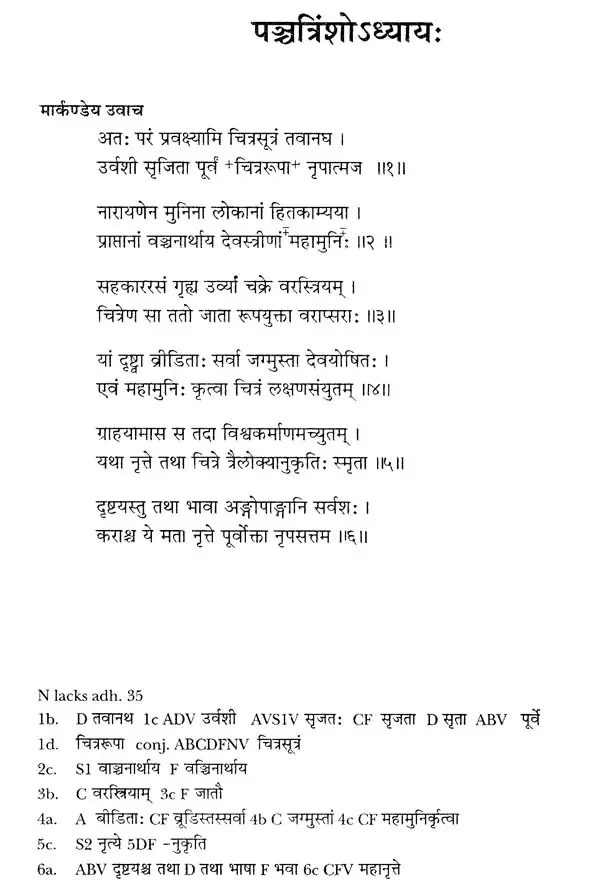
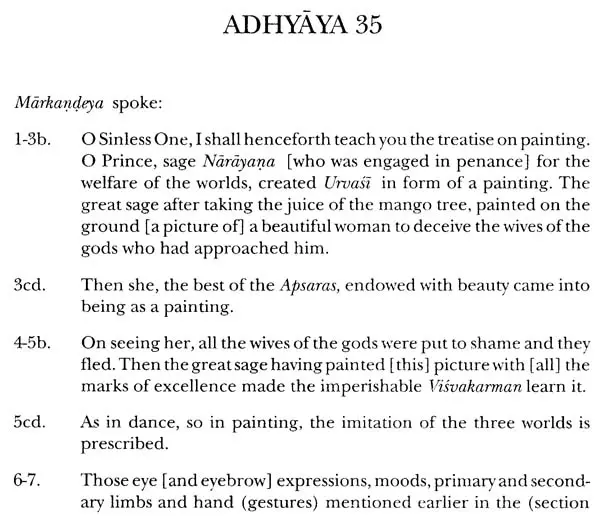
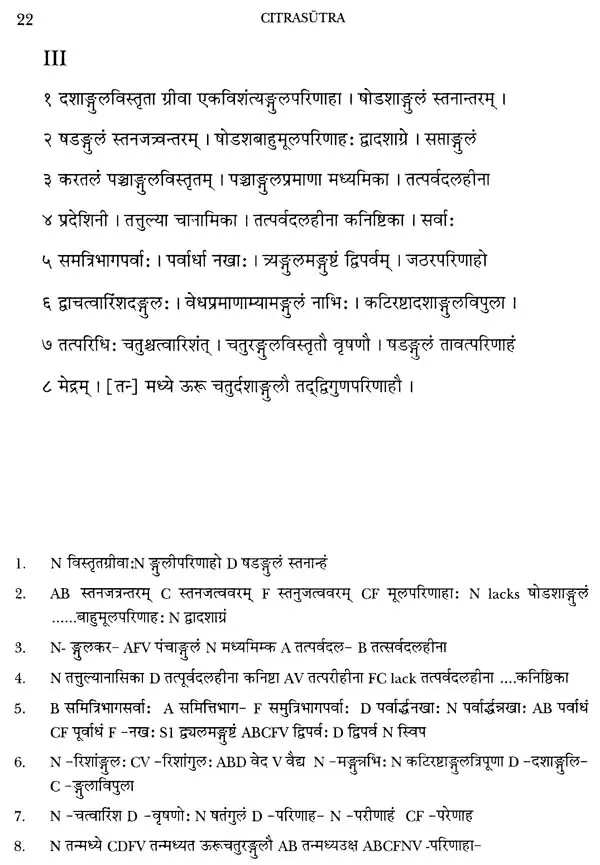
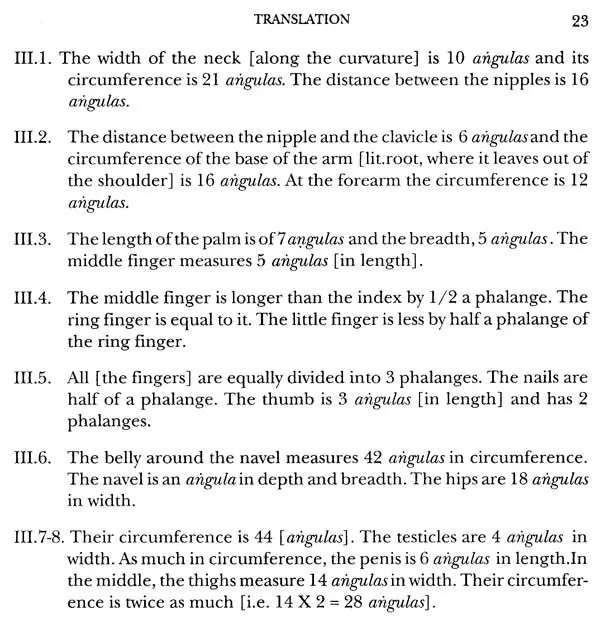
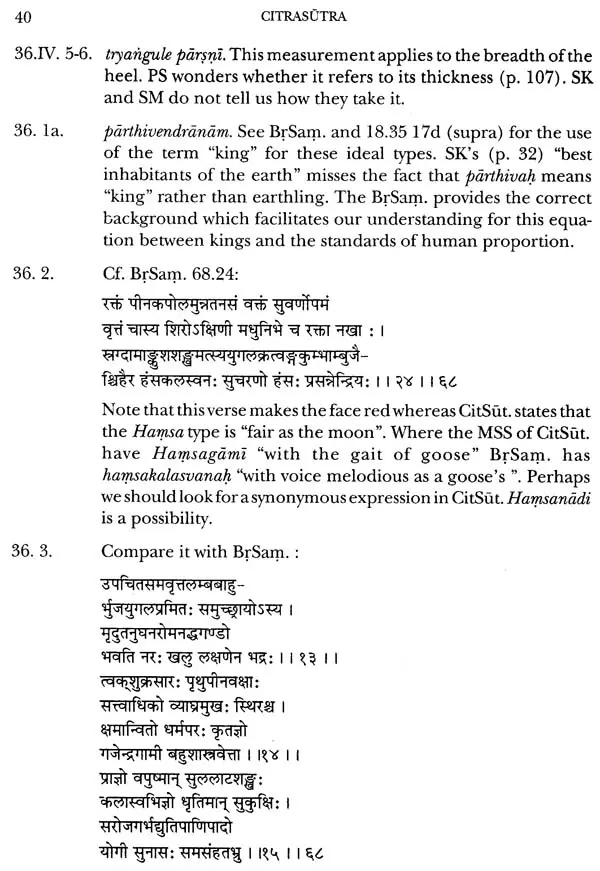
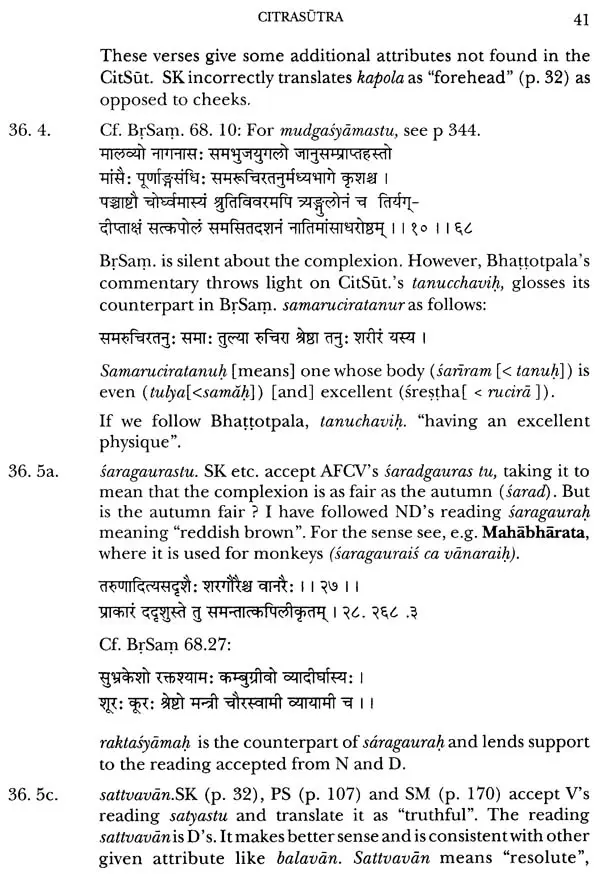
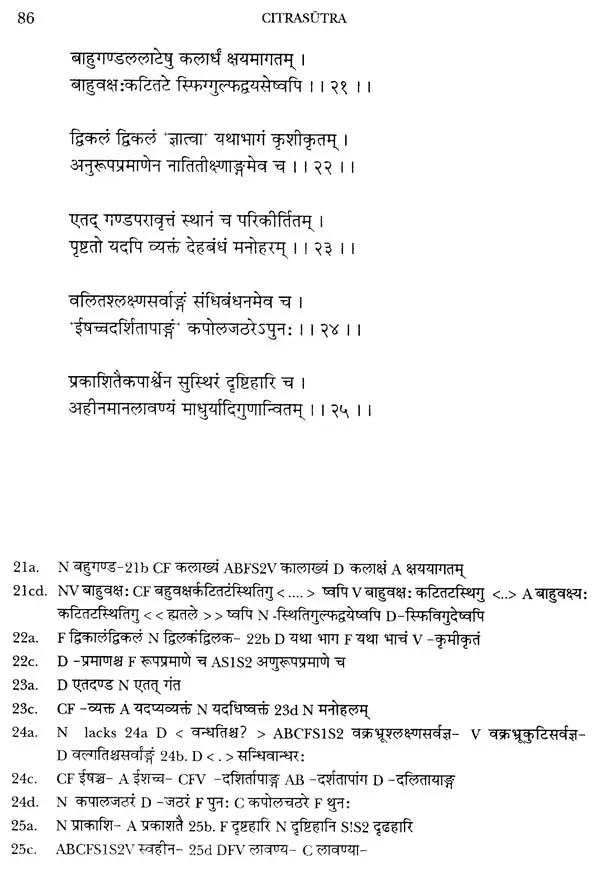
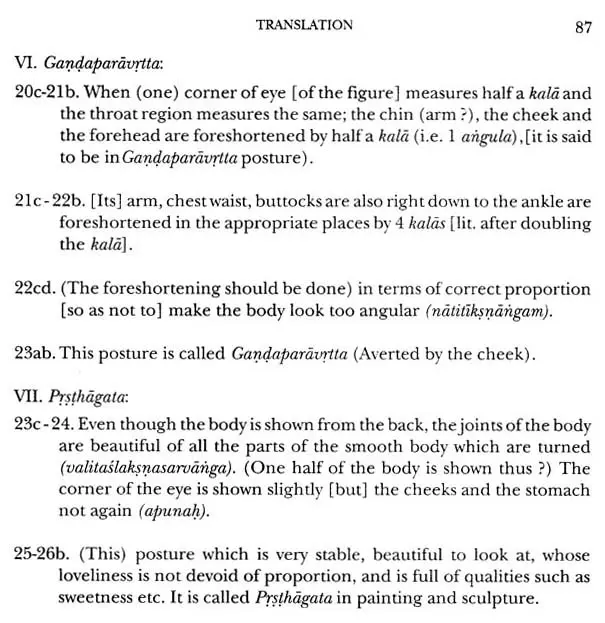
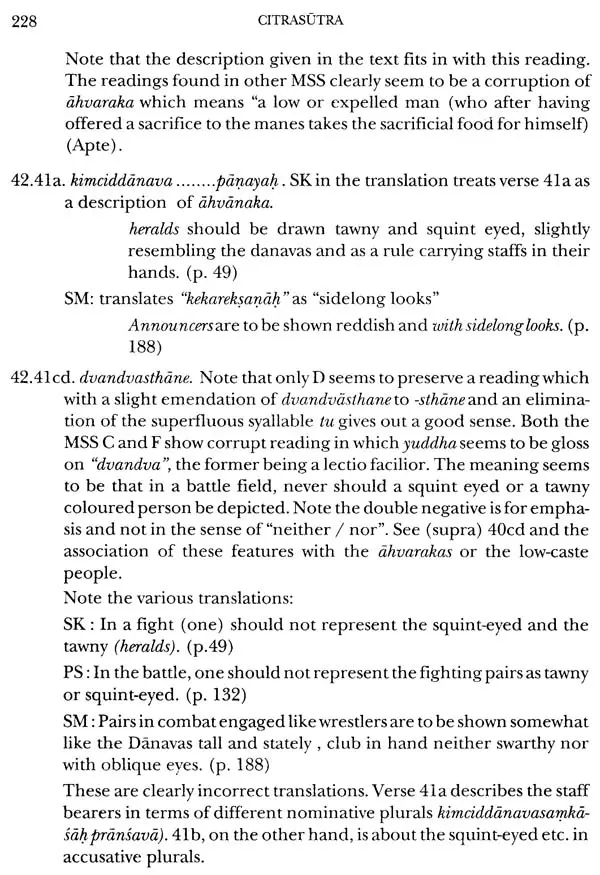
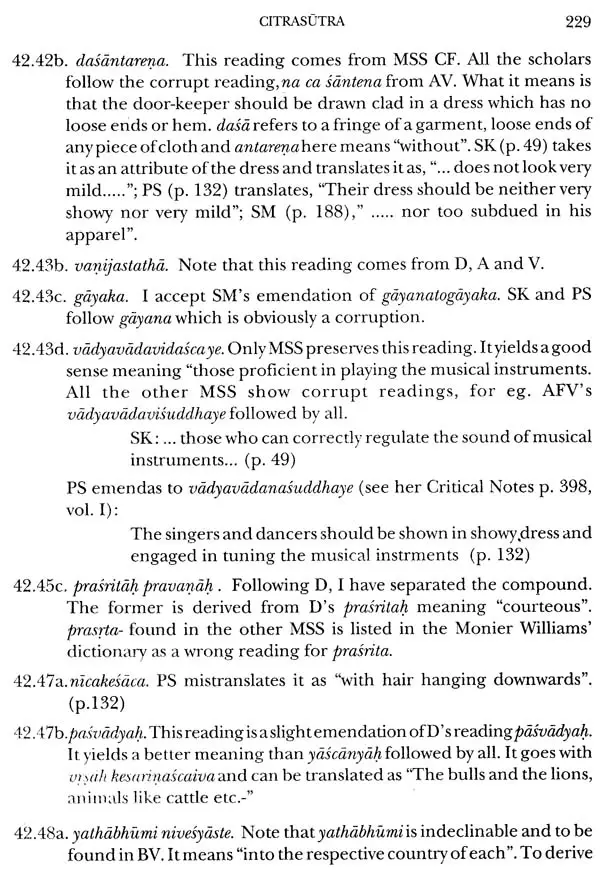
Delivery and Shipping Policy
- INTERNATIONAL SHIPPING
- Rs.1000-1100/kg
- ESTD. Delivery Time: 2-3 weeks (depending on location)
- Bubble Wrapped with Extra Padding
- NATIONAL SHIPPING
- NCR: Rs. 30/half kg
- Standard: Rs. 80/half kg
- Express shipments also available on Request
- ESTD. Delivery Time: Ranging from 1-4 days up to 7 business days (Depending on your choice of Delivery)
- TRACKING
- All orders; national or international, will be provided with a Tracking ID to check the status of their respective orders
- Depending on the Shipping Service, Tracking ID may be used on their respective tracking portals
Frequently Asked Questions (FAQs)
Domestic Shipping: 3-4 Days (after shipping)
International Shipping: 1-2 weeks (based on your location)
You will receive an email once your order has been shipped or you can email us if you didn't receive tracking details (info@mlbd.co.in)
Every book that we sell is the latest edition except all the rare books
Yes, we do provide free shipping, only on domestic orders (within India) above Rs.1500






![Advaita Vedanta mein Gyan evam Bhakri : Darshnik Vimarsha [Knowledge and Devotion in Advaita Vedanta : Philosophical Discourse] by Dr. Satyakam Mishra and Dr Karan Sigh](http://www.motilalbanarsidass.com/cdn/shop/products/ADVAITAVEDANTAMEGYAN_large.jpg?v=1675408211)




